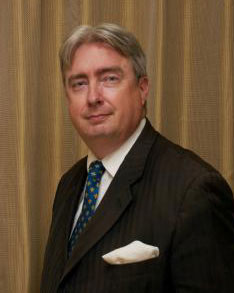
By Charles A. Coulombe
RURAL magazine is grateful to Mr Coulombe for providing for this website this thoughtful essay on the development and history of the viceregal – or gubernatorial – functions of the Royal representative in the various areas of His dominions. It is of particular interest to Jersey, where H.E. The Lieutenant-Governor is the Island’s own viceroy.
—-
‘So never let us give up pomp and shows, but let Parliaments throughout the Empire open to the noise of guns, the crash of bands, and all those attributes which pertain to Kingship and its representatives. But once that representative has stepped off his temporary pedestal let him put all this behind him, remember that the honour and the glory never belonged to him as an individual, but only as the representative of the Sovereign, and let him slip back to his own niche in life, glad to feel that he has done his best to serve his King and country’ – (Evelyn) Viscountess Byng of Vimy, ‘Up the Stream of Time’
The accession of the new King and the proclamations of that accession up and down the length of Britain and across the Commonwealth featured a number of interesting figures who are often not thought of by those not in government – and even more often improperly by those who are. These are the individuals whose honour it is to represent the King on the local level.
Varying wildly in duties and power, they nevertheless play – each in their particular spheres and ways – the role that the King would, if he happened to live in a given place. Be they Lords Lieutenant in England, Wales, Scotland, and Northern Ireland, Lieutenant Governors in the Crown Dependencies (such as Isle of Man, Jersey, and Guernsey) and Canadian Provinces, Governors in the few remaining colonies and in the Australian States, or Governors-General in Canada, Australia, New Zealand, and the other remaining Commonwealth Realms, they must walk the same delicate walk the King must manage between the welfare of the people and the dictates of said people’s political masters – who, despite the ritual of election, are often no more servants of the people than they are of that King.
From Medieval times, of course, the Emperors and Kings of Europe could not be everywhere at once, and so they appointed representatives of various kinds and titles to maintain justice among their peoples, and defend them from external attack – as in every age these tasks were accomplished with varying amounts of success. In England, the first of these – dating back to Anglo-Saxon times – were the ‘Shire-reeves, or as contracted in everyday speech, the Sheriffs. Each of these was to maintain the King’s Peace in his respective county. These had the right to draft the local population in pursuit of this cause – the famed posse comitatus, last invoked in England in 1830. But in the 1540s, Henry VIII introduced the new office of “Lord Lieutenant.” This official took over the Sheriff’s military duties, as well as acting as the Sovereign’s direct representative. In 1871, the Lord Lieutenant’s control over the militia was taken away, and 50 years later his right to call them out. To-day both the Sheriffs and Lords Lieutenants are purely ceremonial; but in most of the United States the Sheriffs retain their medieval powers, and the ‘Posse’ remains a standard motif of films and TV shows set in the Old West.
The expansion first of England and then the United Kingdom overseas required Royal representation as well; in Ireland from Medieval times this was the Lord Lieutenant – also called the Viceroy, seated at Dublin Castle. But the first part of that era occurred during the struggles between King and Parliament for sovereignty over the Three Kingdoms and their nascent colonies in America and elsewhere. Starting with the start of the Civil Wars in 1642, culminating in the so-called ‘Glorious Revolution’ in 1688, and ending with Culloden in 1746, this era saw the triumph of the Whig Oligarchy in the Mother Country, and the establishment of small imitation ones in each of the American colonies. The Royal Governors, although appointed latterly by the Prime Minister, were paid by the assemblies dominated by said local oligarchies. Despite occasional quarrels, this system lasted fairly well until after the Seven Years War, and the elimination of the major enemy whom those assemblies had so feared.
Three things came together: the need of successive governments to raise at least a token payment from the colonies to pay off the debts incurred on their behalf; the desire of King George III to return the relationship of King and Cabinet and Parliament to what it had been under Queen Anne; and the desire of the colonial oligarchs to run their own affairs without higher supervision. These resulted in the American Revolution, whose outcome saw the King’s attempts at governmental reform defeated, the establishment of four new countries (the United States and the American Loyalist settled Anglo-Canada, the Bahamas, and Sierra Leone), and ultimately the complete separation of British governance at every level into practical and ceremonial elements. Each of the developments would play their part in the establishment of the current Viceregal office as it is practised across the Commonwealth to-day.
As the British Empire grew over the 19th Century, it had four major components, apart from the United Kingdom itself and the Crown Dependencies: the Raj in India, eventually the Empire of India (when control passed from the East India Company to Whitehall); the Crown Colonies, directly administered by Governors responsible to the British government; protectorates; and the Settler colonies, found in Canada, Australia, South Africa and New Zealand. Starting in 1867 with the first named, the Canadian, Australian, and South African colonies were united into Federations of more or less centralised governance; with New Zealand and Newfoundland, each was headed by a representative ostensibly of the Monarch, but appointed on the ‘advice’ of the British government. These were the first Governors-General, their title borrowed from that of the Viceroy or Governor-General of India. The First World War saw these Dominions, as they would be called, each fight beside Great Britain; after the war they would be treated as independent nations. In 1922, the Irish Free State was given the same status, and four years later it was agreed by each of them with the British government that they would be of equal status within the Commonwealth with Great Britain, and completely independent of Downing Street, Whitehall, and Westminster. This arrangement was erected into law by the 1931 Statute of Westminster, which essentially provided for the ‘divisibility of the Crown’. What this meant was that that George V and his successors would be – as King of Great Britain – essentially a different legal person from the Kings of Canada, Australia, New Zealand, South Africa, the Irish Free State, and Newfoundland (although the last-named surrendered its Dominion status to the Home government when the depression bankrupted the little country; it has been a Province of Canada since 1949). Henceforth the Governors-General and the Australian State Governors would be appointed on the “advice” of the Dominion Prime Ministers, while High Commissioners would represent the Commonwealth governments to each other. On the one hand, this meant during the 1936 Abdication Crisis, it was probably unconstitutional for Edward VIII to consult the Dominion Prime Ministers through Stanley Baldwin (whether his directly communicating with them would have brought about a different result is a moot question). On the other, it meant that during World War II George VI was at war with the Axis as King of Great Britain and most of the Dominions, but neutral as King of Ireland; he continued to sign the letters of credence for the Irish ambassadors to Germany, Italy, and Japan – even as those countries’ envoys were accredited to him in his Dublin capacity.
In 1947, His Majesty became King of India (rather than Emperor), Pakistan, and Ceylon – each of which became Dominions with their own Governors-General. Two years later, Ireland left the Commonwealth, having dispensed with their own Governor-General in their constitution of 1937. Ten days after the Irish action, during the Imperial Conference the London Declaration made on 28 April 1949. This allowed for a new status entirely – that of ‘republic within the Commonwealth.’ In this way, India could become a republic in 1950 while remaining part of the organisation. In return, they acknowledged the King as ‘Head of the Commonwealth, symbol of the free association’ of its member nations.
As a result, when the King’s daughter ascended the throne, she needed a new title. Her father had been, at the end of his life, “By the Grace of God, of the United Kingdom of Great Britain, Ireland, and the British Dominions beyond the Seas King, [Emperor of India], Defender of the Faith.” Elizabeth II was “By the Grace of God, of the United Kingdom of Great Britain and Northern Ireland, and of Her Other Realms and Territories, Queen, Head of the Commonwealth, Defender of the Faith.”
At her accession, she was, in addition to the UK, Queen of Canada, Australia, New Zealand, South Africa, Pakistan, and Ceylon. During the course of her long reign, the last three became republics, and a long list of countries that received independence would start out as ‘Realms’ (the term that succeeded ‘Dominion), and then – in the name of decolonisation – be transformed by their local oligarchs into varying sorts of banana republics. So went Malta, Sierra Leone, The Gambia, Nigeria, Ghana, Kenya, Uganda, Rhodesia, Tangyanika (later Tanzania, after annexing Zanzibar subsequent to the overthrow of its Sultanate), Mauritius, Fiji, Guyana, Trinidad and Tobago, and most recently, Barbados. Others more honestly and even more disastrously became republics immediately upon independence. There was a move to take away the title ‘Head of the Commonwealth’ from the British Crown, but the Queen quashed that in her last years, and King Charles III has ascended to that as well as his other titles.
The nature of the Viceregal office has changed in many ways over the decades since the Statue of Westminster, although in each country that boasts the office its constitutional duties remain the same. In the beginning, as might be expected given the position’s colonial origins, the appointees were ‘Grand Ornamentals’ – British-born noblemen, lesser Royals, or distinguished military commanders. But starting in the 1950s, local-born Viceroys began to be appointed; initially, these were figures of equal apolitical distinction to their British predecessors – folk such as Vincent Massey and Georges Vanier, for example. The splendid Windsor Uniform was gradually phased out in most places, bowing and curtseying to the Monarch’s representative abolished, and protocol at the various Government Houses relaxed in the name of modernity and national maturity. Often various figures in government would insist that the Governor-General was chief of state, rather than the Majestic personage he represented (even as they would claim that their solemn Oaths to the Monarch did not prevent them from being republicans). Worst of all, Government Houses were often used as retirement homes of washed-up politicians.
Nevertheless, some things remain. On a purely civil level, each Governor-General (and the Governors in the Australian States, Lieutenant Governors in Canadian Provinces, and Custodes in Jamaican Parishes – these last roughly equivalent to the British Lords Lieutenant) represents the Crown, doing what the King would do if he lived in that particular capital. So it is that each is at the apex of the local honours system, conferring the Orders of Canada, Australia, New Zealand or whatever at New Year’s and the King’s Birthday; heading the local Order of St. John; hosting innumerable distinguished visitors and social and cultural events at Government House; in turning attending any number of such; acting as patron of various worthy causes and organisations; and visiting various deserving people, places, and things in their given bailiwick. So too, as all Oaths that soldiers take are to the King, so the Governors-General are nominal commanders-in-chief of their armed forces, and maintain close connexions with them.
Their usual political role is also in local emulation of the King. Just as the Whitehall Cabinet legally act as the Privy Council, and their fiats must be orders of ‘The King-in-Council,’ so too with the King’s Privy Council for Canada and the various Executive Councils, which are the legal expressions of the cabinets. Without ‘The Governor-General-in-Council’ and the like, the government cannot issue valid decrees; just as in Britain the Realm Governments – be they national, provincial, or state, wield the Royal Prerogative, allegedly in the name of the electorate. So too, the Viceroys receive foreign ambassadors at their Government Houses, just as the King does at Buckingham Palace.
Constitutionally, as in Britain, each Realm Parliament consists of the King, the Upper House (if existing), and the Lower House. Practically, however, each Parliament is only completely represented at its ceremonial opening. As with His Majesty, the Viceroy arrives at the local Parliament building in such pomp as local custom provides, enters the Upper House (regardless of whether such a body still exists), and sits upon the throne. Black Rod summons the members from the Lower House, and all or some process to the place where the King’s representative awaits them. He then reads the Speech from the Throne, setting forth the cabinet’s agenda. It used to be the standard proceeding that throughout the Speech His Excellency would refer to “My Government,” as the King does. But in a number of jurisdictions, this has been altered to “the” or even – in a most disingenuous and saccharine manner – “Your” government. In any case, with great pomp the Viceroy withdraws, leaving the Parliament to debate the “Address-in-Reply,” which allows them to critique the government’s policies prior to sending the Governor-General a pro forma thanks asserting their loyalty to “His Majesty’s person and government.” Similarly, the Royal Assent must be given by the Viceroy – in most places this merely means bringing the measures passed to Government House to be signed in the King’s name by his representative. But in Canada – although the practise has been lessened in frequency in the past few decades – both on the Dominion and Provincial levels – the ceremony of Royal Assent is almost as impressive as the Opening – in emulation what was done at Westminster in the 19th Century.
Of course, the republicans among the political class resent all of this ceremony as at once old-fashioned, colonial, and immature. But it is an important symbol of a truth that remains throughout the King’s Dominions – as with His Majesty, the Viceroy is the ultimate guarantor of legal, constitutional government. The Reserve Powers as they are called – the right to dismiss a government, and to call or refuse to call for new elections entirely on the King or his representative’s own initiative, without advice – are as it were like a fire extinguisher. In the normal course of things they should not be used – and if they must be, the political class have failed – creating a situation where defence of the constitution requires extraordinary action. There have been a few historical situations that have demanded their use: Canada in 1926, New South Wales in 1932, South Africa in 1939, and Australia in 1975 are examples. But using these powers is truly the nuclear option – the likelihood is that any Viceroy who does so will ruin his career; he must be ready to put his duty tot eh King and to his people above his own welfare – another reason why appointing retired politicians to the role is probably unwise.
Indeed, although the institution has well served those countries fortunate enough to retain it, it could certainly stand some strengthening in said nations – as indeed could the Monarchy as whole, given the political classes’ never-ending desire for ever more power. This is partly a question of administrative style: Justin Trudeau’s pick, Julie Payette, was forced out of office because of her abusive manner of dealing with staff. The gravitas required of such an official would seem to require special training, and the present writer has long advocated a Viceregal Training Session of sorts at a place like Sandringham, where the necessary skills could be taught. But beyond that, political realities demand that a Viceroy, to function properly, be as far above politics as the Sovereign whom he represents. As with the honours system, Viceregal appointments would no doubt be vastly improved by being taken out of political hands and placed in those of the King on whose behalf they are nominally given. Of course, to expect politicians to accept such a proposal is a bit like asking the foxes to approve security for a henhouse they frequent.
Charles A. Coulombe divides his time between Austria and Los Angeles. Born in New York on the day of Kennedy’s election, he has written 12 books and numerous articles on a wide variety of topics, and is a sought after lecturer at universities and after dinner functions alike. He is on the Board of the Canadian Royal Heritage Trust.
Of Norman descent (Le Neubourg) via Canada, he has always had a fascination with the Channel Isles as the last fragment of his ancestral Duchy that escaped the horrors of 1789.




